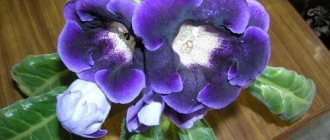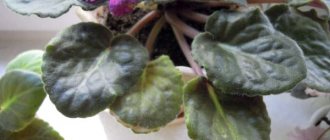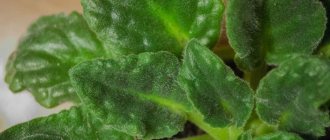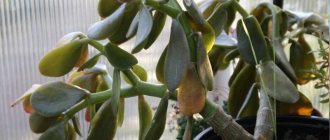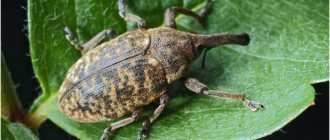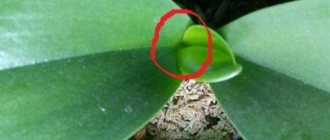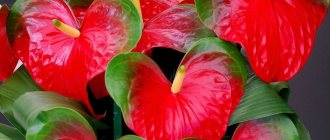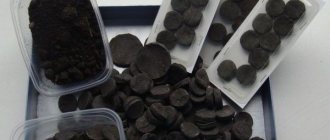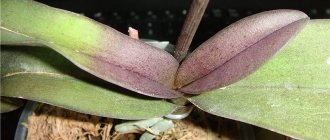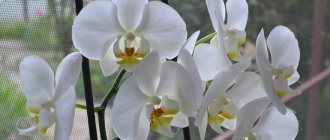Many indoor plant lovers are familiar with a flower called gloxinia. We will look at gloxinia diseases with photos today. This tuberous plant has a short stem and velvety leaves. The funnel-shaped flowers have beautiful colors.
Gloxinia happens:
- standard with a height of up to 25 cm;
- compact with a height from 12.5 to 25.3 cm;
- miniature, having a height of 5 to 12 cm;
- microminiature up to 5 cm high.
The cause of its diseases can be fungi and pests. It is quite difficult to grow a flower that is predominantly blue-violet and red-pink in color.
Flowers
Gloxinia has won the hearts of flower growers around the world thanks to its flowers. Flowering for the most part lasts a long time. But it happens that by mid-summer gloxinia stops flowering. And here many will ask the question, how to resume flowering?
And there is such a way - you need to cut the stem just above the first pair of leaves, after the last flowers have withered. Also, do not forget to additionally feed the plant.
After a short time, new shoots will appear, and then the plant will delight you with new buds. The reblooming period is usually shorter, and the flowers are not as large and bright.
The no longer blooming gloxinia, as before, needs sufficient watering and fertilizing.
Prevention
Preventative measures are the best way to avoid problems in growing a flower.
Why do gloxinia leaves curl and what to do in this case:
- sunburn. After buying a flower, place it on the western windows, not on the southern ones;
- overflow Before watering, you need to check the dryness of the soil with your finger;
- drafts. You need to put the pot in a warm place while airing;
- temperature. Adjust the temperature immediately after purchasing the flower.
Important! Another important preventative measure is regular fertilization, which helps avoid the occurrence of diseases.
Although gloxinia is considered a demanding plant, caring for the flower is not so difficult. The main thing is to adhere to the basic rules.
Gloxinia leaf diseases and treatment, use of insecticides, video
Blueberry diseases and their treatment
The advantages of gloxinia flower growers rightly include not only large bell flowers, but also the velvety foliage that forms the lush above-ground part of the plant.
If there is gloxinia in your home collection, leaf diseases and treatment of their consequences can take a lot of time from the gardener.
Fungal and bacterial infections, care errors and pests threaten the flower with serious damage and even death.
Gloxinia diseases. Fungal diseases of gloxinia leaves and their treatment
The most dangerous, rapidly developing and intractable diseases are caused by pathogenic fungi. Their spores are carried by the wind and land on plants with drops of water or soil particles. Pathogens can be introduced from a tool, loosening the soil or replanting a tuber.
More often than others, gloxinias are attracted to late blight fungi. Leaf disease on gloxinia appears as brownish-brown spots on the greenery, petioles and stems. In dry air, the affected areas quickly dry out, the leaves, and then the entire above-ground part die. With increased humidity, the tissues under the fungus rot, soften and also die.
Treatment of late blight rarely produces positive results, and the resilient fungus can remain active for several years
Therefore, it is important to prevent the onset of the disease by directing all efforts to prevention.
- All purchased tubers are treated with fungicides before planting.
- The soil for planting is heated in the oven.
- Gloxinia plants and the soil under them are sprayed with a solution of fingicide or phytosporin several times a year.
If the gloxinia leaf disease, as in the photo, still makes itself felt, the affected specimens are not only treated with an antifungal agent and cleaned of drying leaves. Gloxinias are quarantined, separated from healthy plants, and then sprayed with a systemic fungicide for preventative purposes. The treatment is repeated after a week.
The same measures are effective in treating gloxinia with leaf diseases caused by other fungi. Such diseases include:
- true and downy mildew;
- anthracnose;
- axochytosis;
- septoria and other infections.
Indoor plants are at greatest risk of infection if safety precautions are not followed during planting, if they are kept outdoors in the summer, or if they are carelessly taken care of.
An alarming symptom indicating a fungal disease of gloxinia, as in the photo, is the formation of an unusual whitish coating, brown, gray or reddish spots, pockets of drying and dying tissue.
Viral and bacterial diseases of gloxinia
Bacteria that cause gloxinia diseases enter plants from the soil, from tools used during replanting, or from a used pot. As a result of bacterial infection, both the above-ground part and the tuber suffer, which is why the stems, leaves, and buds become deformed, become wet, and die.
Diseases of a bacterial nature, especially if their pathogens have settled on tubers, cannot be eradicated. Even deep pruning will not save the plant. Therefore, if a grower values his collection, the immune protection of gloxinia is supported with Epin or another similar drug, care is established and safety precautions are observed when storing and transplanting tubers.
These same rules should be followed to protect flowers from viruses. Their appearance is marked by spotting of leaves and flowers, their deformation and gradual suppression. If a flower develops similar symptoms, its parts are not used for propagation, but are replaced at the first opportunity with a new, healthy specimen.
Gloxinia diseases. Gloxinia pests and their control
Often traces of the presence of pests are perceived as a gloxinia disease, but the treatment of leaves in this case is of a completely different nature and, with due attention, will certainly return the plant to health.
The most dangerous enemies of gloxinia are thrips and microscopic mites. In the first case, small grayish-brown spots appear on the leaves. The edges of the leaf plates curl and dry out. The shape of buds, stems and other parts of the plant changes ugly. In addition to repeated treatment with insecticides, it is useful to replant gloxinia by washing the tuber in a solution of potassium permanganate.
The reasons for the appearance of pests and diseases of gloxinia lie in care errors. In dry air and improper watering, spider mites and cyclamen mites appear on the leaves. Reproducing quickly, these parasites capture and oppress gloxinia and other indoor flowers.
Mite colonies look like a dusty coating. And vital activity causes oppression of shoots, the plant refuses to bloom. To defeat dangerous pests, acaricides and insecticides are used, and they must take regular care of green pets.
Features of the plant
Gloxinia is a spectacular flowering indoor plant . Its peculiarity is its lush flowering, and with careful care and favorable conditions, up to 15-20 buds can form on one flower. Gloxinia is a perennial herbaceous plant native to Brazil. Its dimensions are small: the height of an adult plant is 15-30 cm.
On a note. Gloxinia tubers live 3-4 years, but as they age, the flowers become less beautiful.
The leaves reach a length of 15-25 cm, are oval in shape, covered with fluff, with scalloped edges, arranged in a rosette. Gloxinia blooms from April to August. Large, “gramophone” flowers are formed on long peduncles. Their diameter is 10 cm. The color can be pink, purple, white.
Gloxinia diseases. Gloxinia pests
Whitefly. Gloxinia diseases
Dracaena diseases causes, symptoms and treatment
The whitefly is white in color and visible to the naked eye. The greatest danger is from growing individuals. Pests consume the juices of leaves and stems, thus can destroy the plant. Adults leave waste products on the leaves, thereby creating unfavorable conditions for photosynthesis. At the same time, the leaves begin to rot, the stems become deformed, and the flower stops blooming and forming buds. Infection by the pest is possible through the soil, other plants, carried by air currents from other diseased plants. For prevention, the soil should be disinfected before use. If you buy a new plant, quarantine it for two weeks. It will also be useful to inspect the plant for infection if it is standing on an open terrace or loggia. If an infection does occur, then a number of chemical drugs will help in the fight, such as: Vertimek CE, Actellik CE, Admiral, Kinmiks, Oberon and other drugs of this group; they act on the intestines of insects, which helps stop the spoilage of the plant.
Shield. Gloxinia diseases
When scale insects appear, a sticky honeydew appears on the leaves. The scale insect has a friend - the false scale insect. You can distinguish them by trying to remove the insect from the plant. In this case, the shield of the real species will detach, but the insect itself will remain in place. Both types are distributed throughout the plant: stem, leaves, buds. They suck out the plant's juices, deprive them of microelements; as a result of such an invasion, the leaves turn yellow, dry out, and young shoots stop growing. If you do not intervene in time, the plant will die. The first step in the fight will be to clear the plant of insects. Take a cotton swab and soak it in a soap solution. Prepare the solution at the rate of 20 g of soap per 1 liter of water. We treat all areas well, removing the shields. You need to spray the plant with an insecticide - Aktar or Bankol and cover with foil for an hour. It is better to carry out several similar procedures with an interval of 3–4 days.
It is worth periodically inspecting the leaves and the entire plant for early detection of infection. You should also treat with insecticides once a year to prevent insects. Infected plants should be quarantined, and the infected area should be washed well with soap and water.
Spider mite. Gloxinia diseases
The most common type of disease of this flower. Insufficient humidity and dry air are a favorable environment for the appearance of such neighbors. When settling on the next plant, they form a colony of about one hundred individuals. They feed on plant sap, causing light spots to appear on the leaves. Affected leaves lighten and dry out. Female ticks live for about a month and during this time they can lay about 400 eggs. Masonry can remain viable for several years in different places. In addition, when unfavorable conditions occur, individuals hibernate until better times. For these reasons, the fight against spider mites can take a long time.
Timely inspection of the plant will help prevent the appearance of spider mites. It will be useful to increase the humidity in the room where the plant is located.
To combat spider mites, treatment with insecticides Fitoverm and Intovir will help. To cultivate the soil, strong preparations are needed that can destroy the shell of the larvae. Such preparations include “Aldikabr” and “Temik”; spraying with phosphorus and sulfur preparations can be carried out.
To increase humidity, spray the plant and place it in a greenhouse. It is better to carry out these activities again after some time to eliminate stronger individuals.
Thrips. Gloxinia diseases
They differ from other insect pests by their elongated body. Some species settle in plant buds and live there all their lives, others prefer leaves.
They feed on juice or nectar. When thrips appear on the leaves of the plant, light spots form - stripes and streaks, which gradually merge. This causes the leaves and flowers to wilt. Flowers grow underdeveloped or do not grow at all. The leaves dry out and fall off.
When starting the fight against these pests, you should take into account that they are very tenacious creatures. The best means of control is the use of insecticides. First, inspect the flowers. If a colony is found on one of the plants, it should be removed from the rest. The location of the flower must be disinfected. For prevention, you need to remove the top layer of soil and treat all plants nearby. Fitoverm, Akletik, Vermitek, Intavir will provide all possible assistance. The drugs should be diluted according to the instructions and re-treated after 10 days.
Why are there spots on the leaves?
Gloxinia develops red, dry, brown or brown spots due to the sun. If you put this flower on a saucer. It is necessary to ensure that direct sunlight does not fall on the leaves of Gloxinia; if you do not pay attention, Gloxinia will develop burns. If you water this plant frequently, the tuber may begin to rot. Because of this, the plant also develops spots. This plant does not like too much humidity. If at least some spots appear or are completely covered, then the flower needs to be treated.
These spots are called fungal disease. In addition to watering and sunlight, fungal disease can be transmitted through soil, water and garden tools. During a fungal disease, the plant develops stripes on the stems and spots on the leaves.
In addition to spots, this plant can get many other diseases. They can be cured, but not all of them. Some lead to the destruction of the root system and the plant dies.
Before starting treatment, you first need to determine the exact disease. Once determined, treatment can begin. To determine the disease, you need to look at the conditions. In which the plant grew. After this, it will become a little clearer what could have caused the flower. Even if the plant was properly cared for. It can still get sick. Some diseases are chronic, while others manifest themselves immediately and the plant dies. Some diseases can be seen almost immediately, while others may not be noticed.
If you do not comply with the conditions for keeping the flower, it can develop two diseases at once. One will appear immediately, but the other will not. After the first disease has been cured, after some time the second disease will begin to appear.
If there are cracks in the leaves of the plant, the disease can enter through the legs of the insect. Basically, the plant is susceptible to disease when it is weakened. Because of this, the plant always needs feeding. Feeding must be chosen so that it prevents the disease.
Gloxinia diseases. Gloxinia pest control methods
Homemade lemon diseases - causes and treatment
In addition to diseases, the normal development of gloxinia can be disrupted due to the fact that the plant has been attacked by harmful parasites - insects and mites. The following discusses the most common representatives of this category.
Spider mite
Traces of the life activity of spider mites are easy to notice in the form of small light spots on the leaves and characteristic threads of cobwebs, as if entangling individual parts of the plant. Having discovered such symptoms, it is necessary to carefully treat the stems and leaves with a soap solution, alcohol or infusion of garlic or onion using a cotton swab. Typically, this procedure is quite effective in the early stages.
If the pest cannot be destroyed, and repeated treatments also do not produce results, you can resort to acaricidal drugs, such as:
- "Flumite";
- "Aktellik";
- "Fitoverm";
- "Skelta";
- "Neoron".
Cyclamen mite
This pest is clearly visible on the plant if you use a magnifying glass. It is quite easy to distinguish it from other ticks and insects - its body, less than 1 mm in size, is almost transparent. Flowers affected by the cyclamen mite quickly wither, and large colonies of the parasite are noticeable on the leaves, similar to a coating of dust.
The cyclamen mite is considered more dangerous than its spider “relative”. The measures to combat these pests are the same, but in order to get rid of the cyclamen mite, it is necessary to carry out at least three treatments.
Thrips
Thrips are small insects that suck the juice from the plant and completely disrupt its development. The defeat is manifested by the appearance of small light spots on the above-ground parts of the flower, as well as characteristic gray stripes on the front side of the leaves. Later, the dehydrated plate becomes brown, withers, curls and falls off. The same thing happens with flowers.
You can fight thrips on gloxinia using neurotoxic drugs such as Apache, Dantop or Mospitan. Hormonal agents that stimulate the production of chitin, for example, “Kiron”, “Pegasus” or “Renegade”, may also be effective. Stronger, but at the same time toxic drugs are insecticides: “Nurel-D”, “Marshal”, “Bi-58”, etc.
Shchitovka
The scale insect is a small insect covered with a dense shell that parasitizes many indoor plants. Its presence can be recognized by dense growths similar to scales that appear on the green parts of the flower and are difficult to separate when you try to remove them. In the first stages of damage, regular treatment with soap and water or alcohol can help cure gloxinia, as in the fight against ticks. Among the insecticidal preparations that can be used in more severe stages, mention may be made of Fosbecid or Actellik.
Whitefly
It should be noted that among the huge variety of varieties of this insect, only one parasitizes indoor plants - the greenhouse whitefly.
The easiest way to recognize this tiny butterfly is to carefully shake the pot of gloxinia: insects in huge numbers will rise into the air and easily reveal themselves
The reverse side of the sheet is also good for marking light clutches of eggs - another way to recognize the whitefly. The affected plant becomes covered with an unpleasant sticky coating; as the parasite multiplies, the leaves turn yellow, wither, curl and fall off.
A regular shower that washes away the pests can help get rid of whiteflies, but it is better to use standard treatment with soap or alcohol
If you want to use chemicals, you should pay attention to drugs such as “Aktara”, “Iskra” or “Fitoverm”
Mealybug
This insect can reach a length of 1 cm, so it can be seen on a houseplant with the naked eye. It’s even easier to recognize traces of the pest’s activity - a white, loose coating in the leaf axils and on other parts of gloxinia, which can be easily removed, as well as sticky spots of honeydew.
If you cannot kill the mealybug with soap, garlic or alcohol, you can use an insecticide. Almost all drugs in this category are quite effective against this pest, so you need to choose the less toxic one. A good option is, for example, "Dr. Foley."
Downy mildew
Downy mildew, or downy mildew, is a fungal disease. The development of this disease is facilitated by sharp temperature changes. Infection can also occur when watering or spraying the plant with rainwater. Downy mildew appears in the form of shapeless spots appearing on the leaves. These spots can be either pale yellow, yellow-brown, red-brown or purple, or colorless. Sometimes the spots are surrounded by a faint border. Over time they turn brown and dry out. On the inside of the leaves, islands of light powdery coating develop in parallel.
If such signs are detected, it is necessary to remove all damaged leaves from gloxinia, and then treat the plant with one of such preparations as “Abiga-pik”, “Bravo”, “Optimo”, “Previkur”, or other similar preparations.
Thrips are the most popular type of pest that attacks gloxinia. These insects feed on the sap of the plant, which leads to its death. The main signs of thrips are light dots, streaks and spots on gloxinia leaves. If you notice such symptoms, immediately isolate the pot with gloxinia from other indoor plants and treat it with one of the insecticidal preparations. For these purposes, you can use Intavir, Aktara, Actellik, Fitoverm or Karate.
Proper care of gloxinia and keeping this plant in optimal conditions will help you avoid the appearance of any diseases and pests.
Next you can see photos of diseases and pests of Gloxinia:
Gloxinia diseases. Diseases caused by improper care
Elongated stem
It happens that the stem of gloxinia becomes very elongated. This is possible for two main reasons. The first reason is poor lighting. Gloxinia is a light-loving plant and when there is a lack of light, it begins to lengthen the stem. If you notice such changes, move the flower to a more illuminated place. Sometimes the stem becomes elongated in plants that have not gone on vacation. In this case, it is advisable to prune. Otherwise, elongated shoots will not produce beautiful and long flowering.
The second reason is the characteristics of the variety. There's nothing you can do about it, but you need to carefully monitor the lighting. The varietal elongation may hide a lack of light, which will affect the splendor of the flowers.
Slow growth
For good health and normal growth of gloxinia, you need to transplant it into a fresh substrate. There are not enough nutrients in old soil for good growth. Over time, the soil clod gets lost and interferes with the normal growth of the root system. The soil does not dry out well and as a result the tubers rot. It is necessary to replace the soil with fresh one. In this case, it is better to do a complete replacement rather than transshipment. It is advisable to carry out the procedure at least once a year.
Slow growth can be caused by a lack of fertilizer. It is better to apply fertilizer to an already watered flower to avoid burning the roots. You should not apply fertilizers to fresh substrate for about a month, this will cause damage to the flower due to excess substances.
Pests can inhibit flower growth. It is necessary to conduct an inspection and take action if necessary.
Leaves curl, dry out, turn yellow
If the leaves begin to curl, you should pay attention to the temperature. This can occur at low temperatures. Another common cause of the disease can be overfeeding with fertilizers.
The leaf grows unevenly and some parts lag behind, which leads to curling. It would be a good idea to check for pests.
Another common cause of the disease can be overfeeding with fertilizers. The leaf grows unevenly and some parts lag behind, which leads to curling. It would be a good idea to check for pests.
Wilting mainly occurs from improper watering. Leaves wither from excess moisture or lack of it. The plant should not be watered at high temperatures, as this will cause the roots to rot and rot, and the leaves and buds to wither. In this case, watering is carried out in the evening, when the main heat has subsided.
If the plant has not been watered for a long time, the leaves will let you know about it. Watering is carried out with water at room temperature. In this case, after a few hours the leaves will return to normal. If the problem cannot be solved by proper watering, you should inspect the tuber. It may be necessary to renew the plant if the tuber is rotting.
Due to too much watering, the buds and stems turn black and rot. This is a good environment for the appearance of fungal diseases.
Yellow leaves indicate many problems. Old leaves turn yellow and fall off - this is normal. If the plant comes into contact with direct sunlight, the leaves burn and turn yellow. If there is an excess of fertilizers, the roots burn and die, as a result of which the leaves turn yellow and dry. In this case, the plant may die. Because of hard water, the acidity of the soil decreases, which leads to yellowing of the leaves. The problem will be solved by transplanting into a new substrate.
Spots on gloxinia leaves
Spots on leaves can appear from contact with water at low temperatures. Water stagnates and this can cause fungal diseases.
If the plant is exposed to direct sunlight, brown or yellow spots may appear. It is necessary to remove the flower from direct rays.
You should also inspect the plant for pests. Brown spots are caused by thrips pests. In this case, it would be appropriate to inspect all the plants.
Organizing care at home
Most often, gloxinia rots due to non-compliance with agrotechnical rules. Let's consider what this plant needs for health.
Lighting
Gloxinia prefers bright, but diffused light. Direct sunlight is unacceptable for her. Windows that face west or east remain a suitable place to place pots.
Plants growing on southern windows need additional shading, as direct rays of the sun will cause burns on the leaves.
Temperature
Note! Since the plant has pronounced periods of active growth and dormancy, it is important to observe the temperature regime.
In summer, maintain a temperature of 20-22 degrees in the room where gloxinia grows. At night, it is permissible to reduce the temperature to 18 degrees. In winter, during the dormant period of gloxinia, 10-14 degrees are considered comfortable.
Humidity
Air humidity should be between 70-80%. If water gets on the leaves and flowers of gloxinia, they will begin to rot. To humidify the air, place the pot on a tray filled with damp expanded clay or pebbles.
The soil
Gloxinias are picky about soil. The plant must be planted in special soil mixtures:
Violet;- Begonia;
- Saintpaulia.
When preparing the substrate yourself, use the following components:
- leaf soil - 2 parts;
- peat soil - 1 part;
- river sand – 1 part.
Drainage is required for a flower. Suitable for him:
- expanded clay;
- washed eggshells;
- Styrofoam.
You can learn more about the soil requirements for gloxinia from this article.
Other Important Prevention Measures
It is necessary to moisten the soil as it dries. In this case, water should be poured into the pan or into the edge of the pot. During the growing season, watering should be plentiful. In this case, excess water can destroy the flower and it will rot. After watering, place the pot on damp gauze. Then the excess moisture will be absorbed. To moisten the soil, use settled water at room temperature.
Gloxinia requires periodic feeding with fertilizers for flowering indoor plants. Apply from April to August every week. Use ½ dosage specified in the instructions (Giant, Gumi). There is no need to fertilize during dormancy. Read about how to properly water and feed gloxinia here.
You can learn more about caring for gloxinia here, and here we talked about the features of growing it at home.
So, gloxinia is a rather fragile and delicate indoor plant, which, if the rules of agricultural technology are not followed, can be affected by pests and diseases. The gardener’s task is to detect the lesion in time and urgently take rehabilitation measures.
Gloxinia diseases. Fungal diseases of gloxinia
Gray rot
With insufficient soil ventilation or high humidity, a gray coating appears on the leaves and stems. This is gray rot. To protect the plant, it is necessary to reduce the humidity. You need to add sand or vermiculite to the soil for good ventilation of the roots. Reduce watering. Leaves that rot should be removed. When the humidity drops, the affected areas will dry out and will not develop. Treatment with fungicides will also benefit.
Septoria
Fungal disease is provoked by high humidity, insufficient light and prolonged contact with water. Spots similar to rust form on the sheets. The stem, buds and leaves quickly wither and dry out. Treatment is carried out with copper-based preparations or fungicides Maneb, Benomyl.
Late blight
The most dangerous disease, since no drugs give good results. Late blight develops due to high humidity and temperature changes - 9-20 degrees, stagnation of water and insufficient soil ventilation. When infected with late blight, a general wilting of the plant occurs, brown spots with a pale rim appear on the leaves, and a white coating appears on the inside of the leaf. Infection occurs everywhere and spreads very quickly. It is better to prevent this disease, because if it becomes infected, you will have to part with the flower. For prevention, the plant is sprayed with fungicides Cuprozan or Tseneb.
Powdery mildew
Appears with high humidity and temperature changes. It is characterized by the appearance of a white cobweb coating. Sometimes infection occurs with soil or through equipment. Any fungicide is suitable for treatment. Treatment should be carried out on all neighboring plants.
The best prevention against fungal diseases is the correct balance of humidity and temperature.
What to do for other ailments?
Among other diseases, the plant is most often threatened by viruses and bacterioses. Let's find out if we can somehow help in these cases.
Viroses
This disease develops against the background of viruses that penetrate through insect pests or with fungal spores. Spots, stripes and dashes form on leaves and flowers. This disease cannot be treated. Remove the affected plant from the pot and burn it.
Bacteriosis
Bacteria can be introduced with untreated equipment, a pot, or undisinfected soil. They defeat:
- tuber;
- buds;
- kidneys;
- leaves;
- stems.
Bacteriosis cannot be treated. If the flower becomes infected, you need to get rid of it. Prevention includes regular use of Zircon and Epin. These drugs stimulate the plant's immunity.
Gloxinia diseases. Pests
Gloxinia is most often attacked by the following pests: thrips and mites. Learn more about these pests and their symptoms.
Ticks
Cyclamen mite.
The mite is very small and can usually be seen under a microscope. The length of an adult is 0.1-0.3 mm. Lives mainly on the underside of leaves. In a large cluster, mites look like a layer of dust.
Signs of defeat. Signs of gloxinia mite damage: leaves are deformed, thickened, leaf edges curl down, the stem is twisted, buds fade, flowers have undeveloped or deformed petals, plant growth slows down, dust appears on the underside of the leaves, brown or dried out shoot tips.
Spider mite.
Very small (0.1-2.0 mm) sucking arthropod. It has a translucent yellow-green, orange or red color. Ticks are difficult to see with the naked eye. The larvae are so small that they are generally invisible. Settles on the underside of the leaves of almost all indoor plants growing in warm, dry air. Insects bite through plant cells, usually on the underside of leaves, and in severe cases also on the tops of shoots, and suck out the cell sap.
Spider mites are identified by the characteristic thin web that entwines the leaves and flowers of the plant. Cobwebs on plants already mean very severe damage.
Signs of defeat. Small whitish dots initially form on the leaves, which later merge into yellow-brown spots, which can lead to the death of the leaves. If the infection is severe, you can find a thin white web on the plants, in which insects swarm. Spider mites move very quickly and easily crawl onto neighboring plants.
Prevention. Regular ventilation of the premises and frequent spraying of plants with water. Periodic inspection of plants is necessary.
Measures to combat ticks. It is necessary to carefully examine the plant and remove all affected leaves. Apply three treatments to the plant with an insecticide at weekly intervals.
Thrips
Description. The length of an adult is 1-1.5 mm. Color - from black to flesh-colored. Thrips have two pairs of membranous wings.
The female lays numerous colorless eggs on the underside of the plant leaves.
Thrips larvae are about 0.5–1.0 mm long. They feed for some time on the cell sap of leaves, petioles, peduncles and flowers, but then go into the soil. The larvae mature and grow wings. They emerge from the ground and can fly from one plant to another.
Signs of defeat. In gloxinias damaged by thrips, light dots, streaks and spots appear on the upper side of leaves and flower petals. The silvery sheen of entire parts of the leaf plate is striking. The upper side of the leaf becomes grayish-brown with a silvery sheen and begins to dry out. And brownish-brown spots appear on the underside of the leaves. Typically, the edges of the leaves arch or curl upward.
The pollen spilled onto the flowers and the deformation of the flowers are noteworthy. Flowers don't open
The petals often turn green.
Numerous traces of excrement can be seen on the flowers, leaves and stem. Brown spots and black dots appear on the leaf petioles and stem.
Measures to combat thrips. Thrips are one of the most persistent pests. After the first treatment of the plant with an insecticide, repeated treatment is necessary after about a week, because new larvae constantly appear from eggs laid in the leaf tissue. It is advisable to isolate the affected plant.
Thrips larvae can fall from the plant into the ground, as well as onto the windowsill, etc. and wait for the right moment for some time, and then crawl onto the plant. That is why the place where the plant affected by thrips stood is thoroughly disinfected.
It is necessary to replace the topsoil of plants treated with chemicals.
It is best to transplant gloxinia tubers into new soil, wash the tubers and roots well.
It is advisable to carry out three treatments of the plant with insecticides at intervals of a week. Insecticides can be changed.
Insecticides. In the fight against thrips, it is advisable to use insecticidal preparations - Aktara, Karbofos, Actellik, Intavir, Decis, Fitoverm, Karate.
More material on the topic of this section:
| Gloxinia is a tropical, heat-loving plant, which also grows quickly and blooms beautifully. Despite the fact that there are more than 50 species of gloxinia in nature, only a few of them are capable of growing and blooming indoors... |
| The rich assortment of gloxinia seeds in specialized stores inspires optimism for those who want to test themselves as a breeder. But don't expect too much from this experiment... |
Late blight
Late blight is one of the most dangerous fungal diseases. It can spread through soil, planting equipment, contaminated planting material, and rainwater.
In soil, the causative agent of late blight can remain viable for up to eight years.
Infection of a plant most often occurs several months before the development of the main symptoms of the disease. The development of late blight is accompanied by the following circumstances:
- too dense soil
- stagnation of water in a flower pot
- too dense placement of plants
- using non-sterilized soil mixture
- watering the plants with rainwater and frequent spraying
- air humidity exceeding 80%
- finding gloxinia in a room with an air temperature of seventeen to twenty-two degrees above zero, which drops to ten degrees at night
The main signs of late blight include:
- the appearance on the leaves of brown spots surrounded by a pale green zone
- white mold-like coating on the inside of the leaves, which appears in wet weather
- drying of leaves in dry weather and rotting in wet weather
- the formation of dark brown stripes on stems and leaf petioles
- frequent wilting of the plant
- the appearance of ring-shaped depressions on the gloxinia trunk below the soil level
It is very difficult to cure late blight, since its causative agent does not respond to known chemicals. Therefore, the best way to combat this disease is prevention. It should consist of spraying or watering the plant with solutions of fungicides such as cuprozan, polycarbocide, zineb, polymarcin or captan. Treatment with them should be carried out during periods that may contribute to the development of the disease, and the interval between treatments should be seven days.
Before planting or transplanting gloxinia, do not forget to sterilize the soil. Cuttings and roots should be placed in a captan suspension for five minutes before planting. If the plant does become ill with late blight, you will have to part with it.
Gloxinia diseases. In order not to provoke any diseases of gloxinia, it is necessary
Do not place several pots of plants in one tray. Grow gloxinias in bright, indirect light, but not in direct sunlight. The distance between plants should be such that gloxinias do not shade each other or interfere with each other’s growth, so that each plant has access to fresh air
This is especially important for the prevention of blackleg disease. Remember that gloxinia is a light-loving plant. The soils in which gloxinias are grown must be light, air- and water-permeable, based on peat.
It is also advisable to steam the soil before planting or spill it with phytosporin. Watering should be uniform over the entire surface of the soil. Gloxinias must be watered on time, do not flood or overdry the soil in pots. Too cold air temperatures and heat also provoke illness. Buy only healthy planting material. Keeping your gloxinia collection clean is the key to plant health.
Phytosporin is excellent for the prevention of gloxinia diseases, and foundationazole is suitable for treatment and prevention.
general information
Gloxinia belongs to the large Gesneriaceae family, which includes Chrysothemis, Koleria, Gesneria and Streptocarpus. This is a spectacular tropical perennial that came to us from Central and South America. Most often in its natural environment it is found in Brazilian and Peruvian forests, in the mountains of Mexico and in the Andes.
Gloxinia received its unusual name in honor of the physician and botanist from Alsace, Benjamin Gloxin. The second name is Sinningia, and this is another most important name in the history of floriculture. Wilhelm Sinning is a horticulturist at Boston University who has developed many new varieties and species of flowering plants, including the domestic hybrid Gloxinia.
